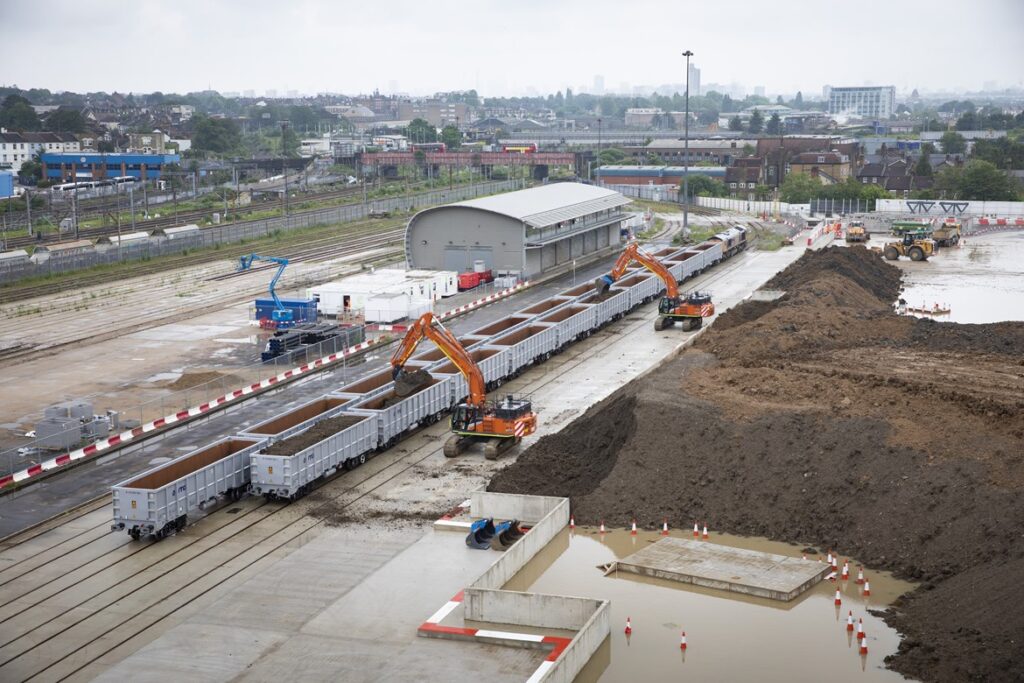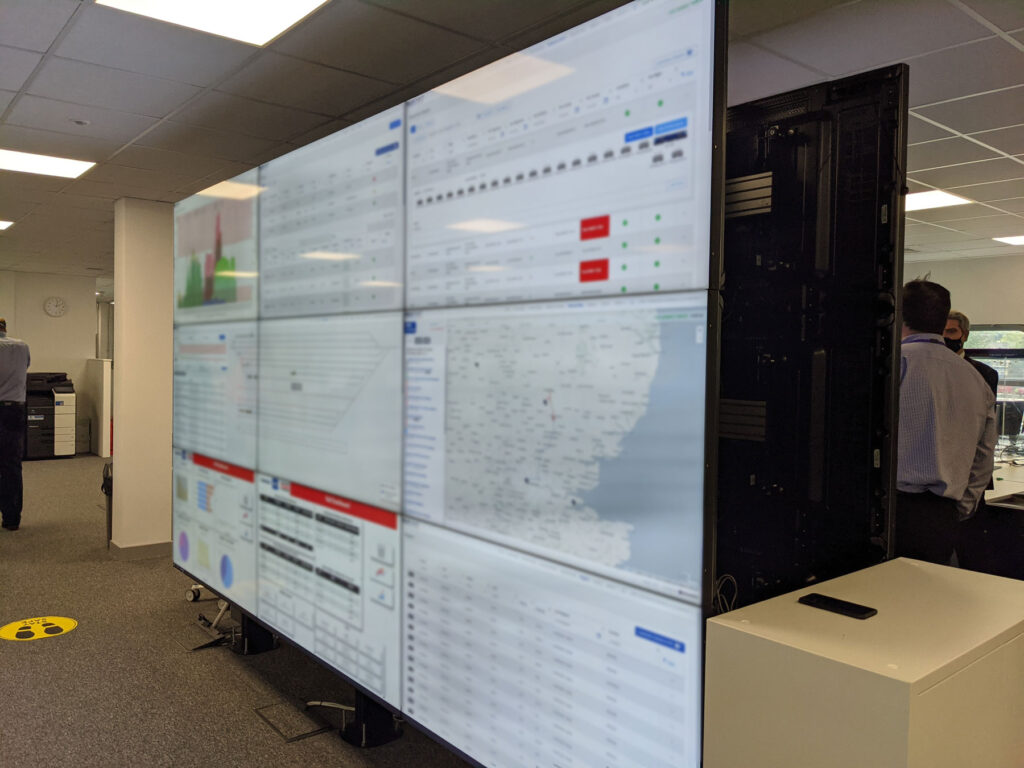A former cargo freight site in northwest London has been taken over by HS2 to be used for moving muck out and concrete in for the construction of the railway tunnels and the new station at Old Oak Common.
Last week, it came into full operations as a “control tower” was commissioned to control the movements of lorries and trains that will bring the site to life.
As a location, it’s ideal, as it has a lot of empty land to one side, and the mainline railway to the other – the empty land is perfect for storage and the railways perfect for deliveries and removals. The aim is that the storage side will fill up with muck from the tunnels and the station site, which will then be carted away, while the rest of the space will be used to store construction materials and tunnel rings. Having such a large space to store materials in a London site is an unusual asset, and helps to even out any issues with deliveries or disposals.
The London Logistics Hub sits on the old Freightliner Terminal site that first opened in 1967. It went on to become one of nine regional freight terminals developed specifically to handle Channel Tunnel intermodal traffic but eventually went into disuse in 2005.
The large concrete tunnel rings are being manufactured at a factory on the Isle of Grain, while the muck being dug out of the tunnels will be shipped to three locations – to fill in a disused pit near Cambridge for housing, landscaping at Cliffe in Kent, and landscaping a future nature reserve on the edges of Rugby.
At its peak, they expect to move some 16,000 tonnes of muck per day to the landscaping sites. Inbound will the tunnel rings for the Euston and Ruislip tunnels, as well as the construction materials for the Old Oak Common station.
Reusing an old railway cargo site in this way obviously reduces the need for road lorries to do the work, which is not just good for local residents in the area, but, coincidentally now proving more useful than expected thanks to the shortage of HGV drivers. So HS2 can’t be blamed for the shortage of food in the shops.
Sitting on the site is the “control tower”, actually a metal office block with a lot of computer screens inside to monitor what’s going on outside. There is a certain aptness to this, as the building was already on the site, and was previously used by a TV production company.
Two teams work here, one side handling the unavoidable road traffic that cannot be rail freighted to the site, and the other handling the rail freight that can, and between them two gigantic screens giving a complete overview of whats going on and any problems that are occurring.
For the rail team that can be anything from where their freight trains are in the UK, to specific loading times as muck is loaded into each wagon to ensure they leave on time and screens showing what future movements are expected so they can plan storage needs on the site. The roadside looks at a wide range of targets they monitor from which lorries arrive on time, compliant with HS2’s higher road safety requirements, and even which sites are showing higher delivery issues that need addressing.
There are also some experimental ideas being tested in another room to deal largely with local communities being affected by lorry movements. Generally, when planning permission is granted for a construction site, there is a travel plan agreed to avoid lorries going down residential streets and the like, and sometimes lorries ignore it. So they are setting up a load of number plate cameras in key locations, and if a HS2 lorry deviates from the approved route, they get a talking to, and if it happens too often, can end up not being a HS2 delivery driver.
Likewise, there’s the nicely named MudCam, which monitors the road surfaces around building sites and if lorries are dropping muck or leaving with muddy wheels, then cleaners can be deployed to clean up the muck. Construction firms already have a requirement to do that sort of work, but it can be haphazard at times, so they’ve been training a computer to recognise muck on the tarmac and automatically flag it as a problem before people notice.
Ultimately it’s complying with regulations as much as being a good neighbour, but there’s a secondary issue. Often a big construction site is blamed for things that are not their fault as people assume it’s them, and these monitoring systems will provide evidence of compliance. The hard part is that often when people are convinced building site X is at fault and are angry about it, even proving X wasn’t at fault often won’t change people’s minds anyway, they’ll still blame X for the nuisance. Will be interesting to see if the level of reporting here helps to deal with that very human peculiarity.
The commissioning of the depot aligned with the naming of a new locomotive that will be one of the many used on the site by GBRf. Afterwards, rail fan, Jermaine Allen from Leeds unveiled the nameplate for GB Railfreight engine 66796, which he has named ‘The Green Progressor’.
He then had the shock of seeing a loco shunter that had been hidden behind the big loco come out – with his name on it.
Class 08 shunter ‘Jermaine’ will occupy a permanent base at HS2’s new logistics hub in Willesden where it will move wagons into positions ready to transport and receive materials.











Interesting to read this but I must admit I thought I was reading an HS2 press release at one point!
HS2: Obsolete technology; obsolete planning; huge and spiralling cost (now over £110 and rising); negative economic return; benefits very few people; minimal time saving; environmentally destructive.
The HS2 project urgently needs to be abandoned and the money used to benefit the UK transport system, particularly in the economically deprived northern half of England.
HS2 Typo error: Should be £110 Billion
Amazing! Really glad the HS2 is carrying on despite some rather moany neigh sayers on the comments section. This is superb infrastructure that will still be being used in 200 years time.
Like ‘Brexit’it’s done now so just move on with your life.The really urgent and long,long overdue project that needs to be on the move is the Themes Estuary Tunnel.
I’ve been going passing
this site on the train for years, nice to see that it is being put to good use. Further North by the A406 rail bridge, there is a siding which looks like it is also being used by HS2 with loads of grading machines sifting tons of rubble. Before the sidings’ transition, there was an old shunter just sitting on the rails rusting away, guess it was scrapped?